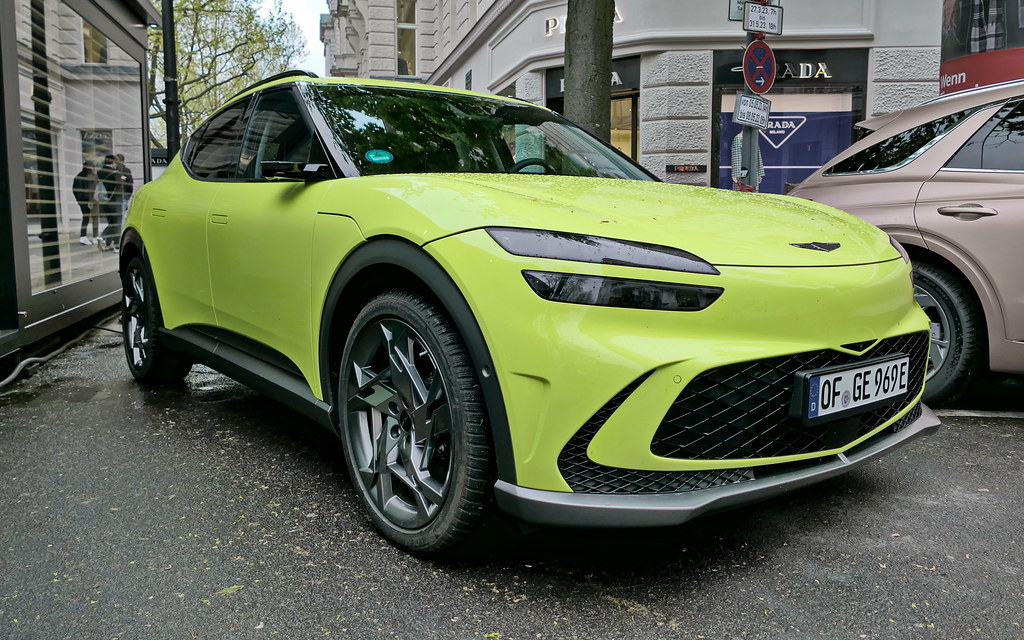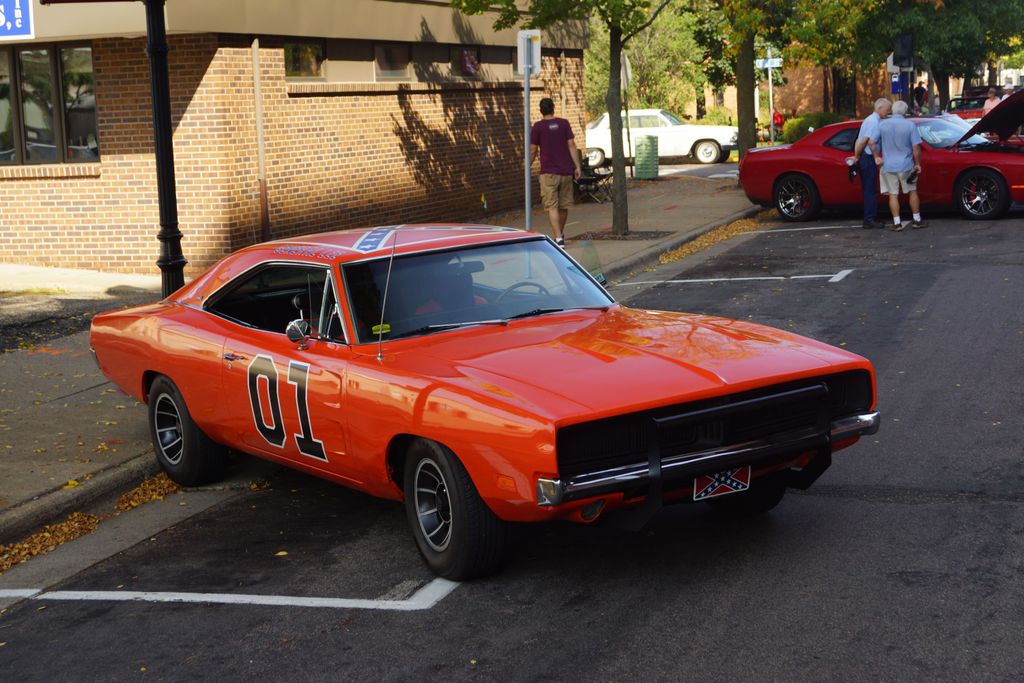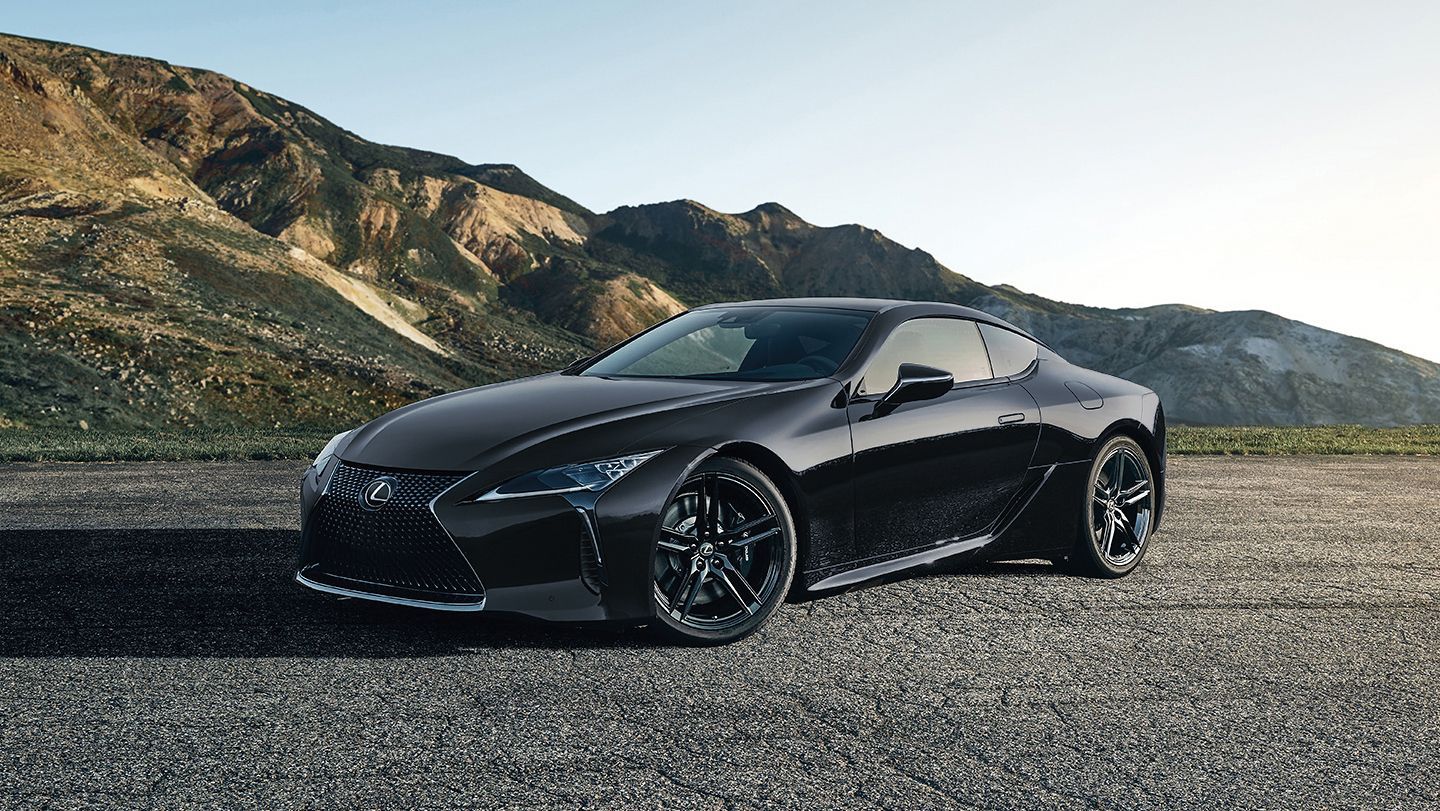
Let’s face it: the dream of a new car often collides with the harsh reality of long-term ownership. Many of us, myself included, have stood on the dealership lot, captivated by sleek designs and impressive specifications, only to find that the vehicle we just signed a multi-year loan for doesn’t live up to the hype. It’s a particularly bitter pill to swallow when you consider the tens of thousands of dollars involved and the potential for buyer’s remorse to set in almost immediately.
Considering the escalating costs of both new and used vehicles today, making an informed purchasing decision is more critical than ever. Relying solely on exterior aesthetics or a brief glance at the spec sheet can easily lead to significant financial headaches down the road. True value and reliability are often hidden beneath the surface, revealing themselves only after months or years of ownership.
That’s why learning from the experiences, and indeed the mistakes, of other vehicle owners offers an invaluable safeguard. We’re here to guide you through a list of 15 specific vehicles that have consistently left their owners wishing they could rewind time and make a different choice, helping you avoid a similar fate when you next visit the dealership.
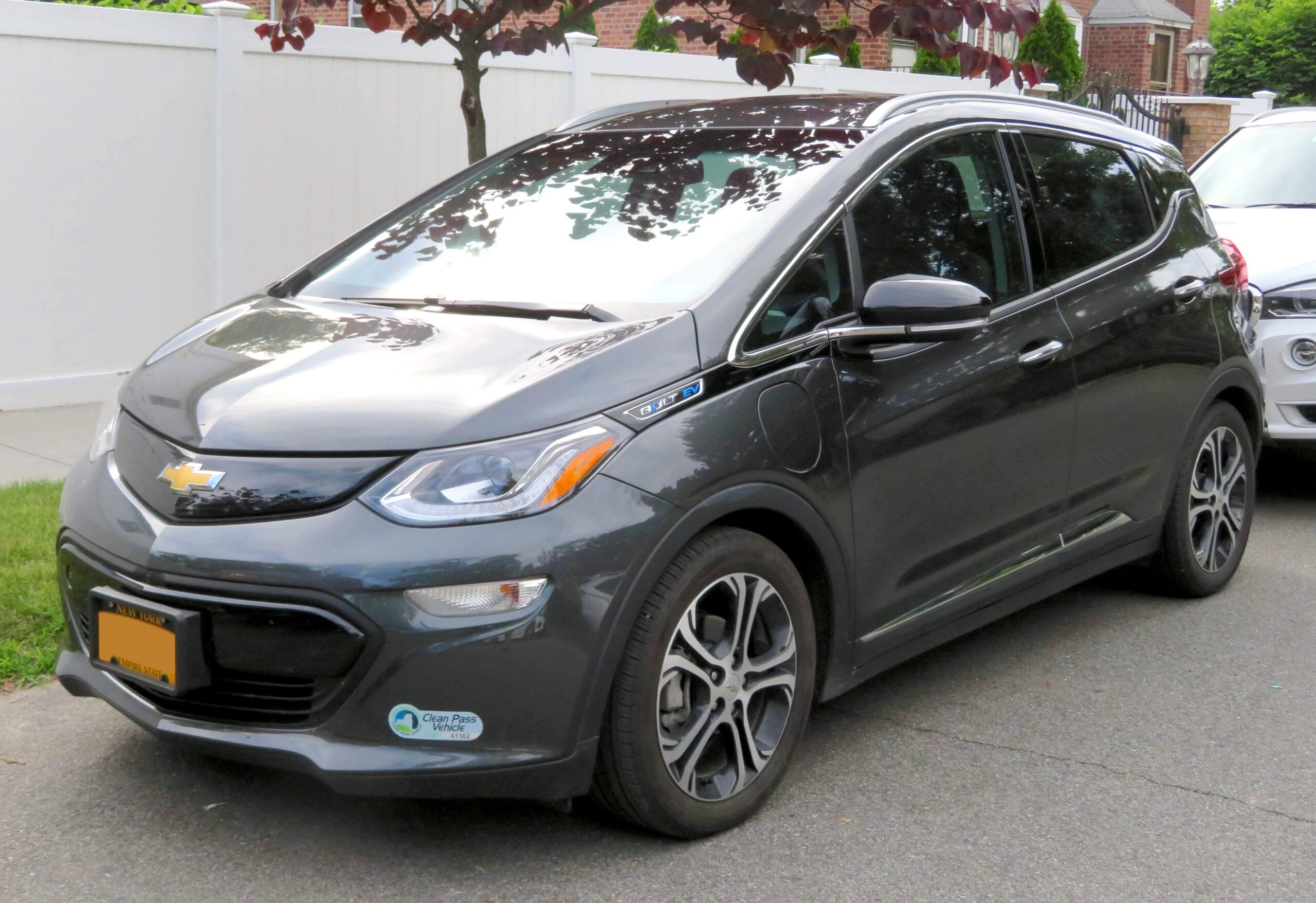
1. **Chevrolet Bolt**The Chevrolet Bolt initially rolled onto the scene with a wave of positive attention, largely praised for its compelling blend of affordability and a respectable electric range. For many eager EV adopters, it seemed to represent a sensible, accessible entry point into the burgeoning electric vehicle market, promising efficient daily commutes without breaking the bank.
However, this promising start was quickly overshadowed by a truly infamous and critical issue: battery-related fires. These serious safety concerns led to extensive and costly recalls in both 2020 and 2021, shaking consumer confidence and turning what was supposed to be a practical EV into a source of considerable anxiety for its owners. The root of the problem was traced to lithium-ion batteries manufactured by LG, which were prone to short-circuiting, overheating, and, catastrophically, igniting into flames.
The implications of these battery issues were profound, not just in terms of the immediate danger but also for the long-term perception of the Bolt’s reliability and safety. Owners found themselves constantly worried about the integrity of their vehicle’s power source, a concern that deeply undermines the fundamental trust one places in their mode of transport. The recall process itself was disruptive and inconvenient, further souring the ownership experience.
Beyond the headline-grabbing battery problems, the Bolt also presented other, albeit less critical, shortcomings. Owners frequently reported that the ride quality was merely “so-so,” lacking the refinement and comfort expected in a modern vehicle. This made longer journeys or even daily driving less enjoyable than anticipated.
Furthermore, the space allocated for rear passengers was often deemed insufficient, particularly for adults, limiting the car’s practicality for families or carpooling. Handling, too, was described as “so-so,” meaning it lacked the engaging dynamics that some drivers seek. Collectively, these issues compounded the disappointment born from the severe battery concerns, transforming what began as a highly anticipated electric car into a regrettably problematic purchase.
Car Model Information: 2022 Chevrolet Bolt EUV FWD Premier
Name: Chevrolet Bolt EV
Caption: 2022 Chevrolet Bolt EV
Manufacturer: General Motors
Production: 2016–2023
ModelYears: 2017–2023
Class: Subcompact car
BodyStyle: hatchback
Layout: Front-engine, front-wheel-drive layout
Predecessor: Chevrolet Spark EV
Categories: 2020s cars, All Wikipedia articles in need of updating, All articles containing potentially dated statements, All articles to be merged, All articles with unsourced statements
Summary: The Chevrolet Bolt EV (marketed in Europe as Opel Ampera-e) is a battery electric subcompact hatchback manufactured and marketed by General Motors under its Chevrolet brand from late 2016 until late 2023, with a brief hiatus between mid-2021 and early 2022.
The first-generation Bolt was developed and manufactured with LG Corporation. Sales of the 2017 Bolt began in California in December 2016; it was released nationwide and international markets release in 2017. A rebadged European variant was marketed as the Opel Ampera-e in mainland Europe. In 2017, the Bolt was the second-best-selling plug-in car in the United States. It was named the 2017 Motor Trend Car of the Year, the 2017 North American Car of the Year, an Automobile magazine 2017 All Star, and was listed in Time magazine’s Best 25 Inventions of 2016. The Ampera-e was discontinued after 2018. By the end of 2020, GM had sold 112,000 Bolt and Ampera-e cars worldwide. The first-generation Bolt had been subject to at least three recalls due to battery fire risks.
In mid-2023, GM officials said they would discontinue the Bolt; after outcry, they announced plans for a next-generation model. The second-generation Bolt, based on the Chevrolet Bolt EUV, was unveiled on October 9, 2025 and will go on sale in 2026 as a 2027 model.
Get more information about: Chevrolet Bolt
Buying a high-performing used car >>>
Brand: Chevrolet Model: Bolt
Price: $21,999 Mileage: 26,369 mi.
Read more about: Rev Your Engines: A Gearhead’s Guide to the 14 Most Iconic Classic Cars of All Time
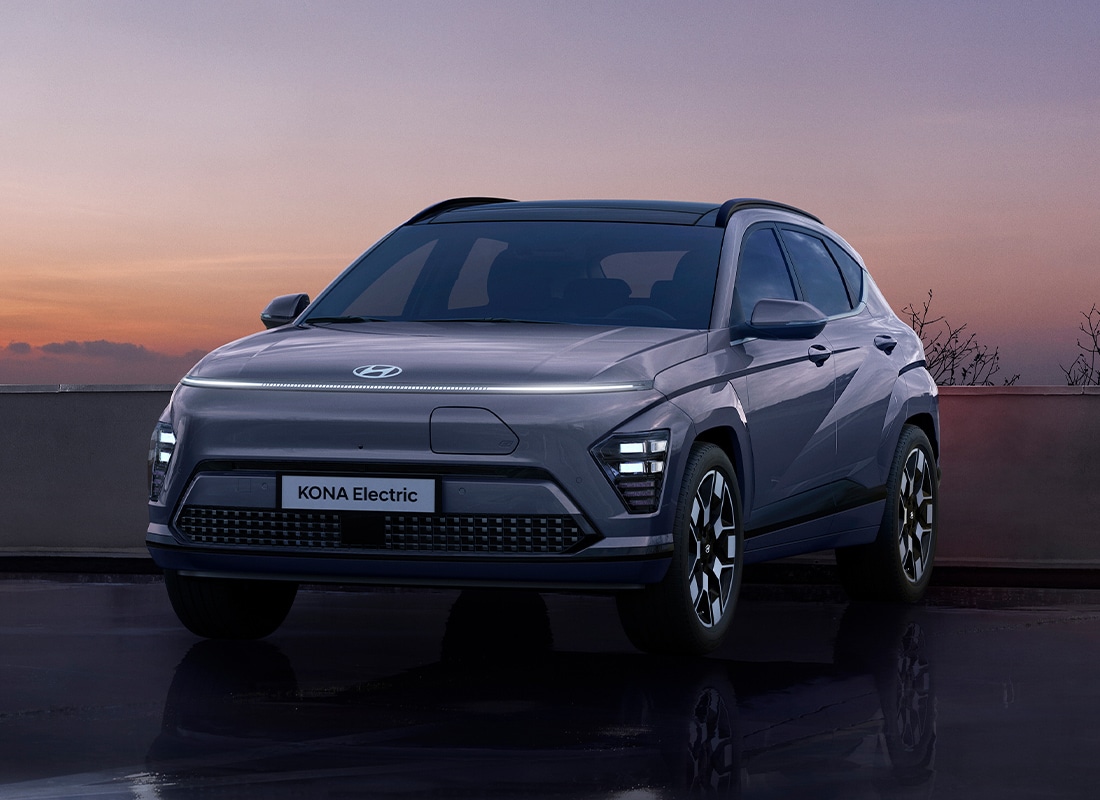
2. **Hyundai Kona Electric**Hyundai, as a brand, has garnered considerable positive acclaim in recent years for its innovative and well-received electric vehicles, demonstrating a strong commitment to the future of automotive technology. Yet, even successful manufacturers can have their missteps, and unfortunately, the Hyundai Kona Electric stands out as a particular “clunker” in their otherwise impressive EV lineup.
Much like the Chevrolet Bolt, the Kona Electric has its own troubling history marred by battery fires and subsequent widespread recalls. In 2020 and 2021, the carmaker initiated a global recall effort, aiming to proactively address the fire risks by replacing battery packs in all affected electric vehicles. This was a necessary, though certainly inconvenient, measure to mitigate a serious safety hazard.
The continuous specter of battery-related safety issues casts a long shadow over the ownership experience of the Kona Electric. The knowledge that a vehicle’s core power component has been implicated in fire incidents inevitably creates a persistent sense of unease and distrust among owners, regardless of corrective actions taken. This fundamental breach of safety expectations is incredibly difficult to overcome.
However, for many owners, the battery issues were “just the tip of the iceberg.” This implies a deeper layer of dissatisfaction, suggesting that problems extended beyond the powertrain to other aspects of the vehicle. While the specific nature of these additional issues is not always detailed, the general sentiment indicates a broader lack of refinement or reliability.
The overall message for potential buyers is a stark “buyer beware!” The Hyundai Kona Electric, despite its initial appeal and the broader success of its brand, has proven to be a vehicle that has consistently disappointed its owners due to critical safety flaws and other lurking problems, making it a common source of buyer’s remorse.
Car Model Information: 2020 Jeep Wrangler Sport
Name: Hyundai Kona
Caption: Hyundai Kona N Line (SX2)
Manufacturer: Hyundai Motor Company
Aka: Hyundai Kauai (Portugal)
Production: 2017–present
ModelYears: 2018–present
Class: Subcompact crossover SUV
BodyStyle: SUV
Layout: ubl
Categories: 2020s cars, All-wheel-drive vehicles, All Wikipedia articles in need of updating, All Wikipedia articles written in British English, Articles containing Chinese-language text
Summary: The Hyundai Kona (Korean: 현대 코나) is a subcompact crossover SUV produced by the South Korean manufacturer Hyundai. The first-generation Kona debuted in June 2017 and the production version was revealed later that year. It is positioned between the Venue or Bayon and the Tucson in Hyundai crossover SUV line-up. The battery electric version called the Kona Electric (or Kona EV) was first launched in South Korea during the first half of 2018 and rolled out gradually worldwide afterwards.
Get more information about: Hyundai Kona
Buying a high-performing used car >>>
Brand: Hyundai Model: Kona Electric
Price: $25,000 Mileage: 54,707 mi.
Read more about: Walk Away Now: 10 SUVs That Are Guaranteed to Bring Buyer’s Remorse
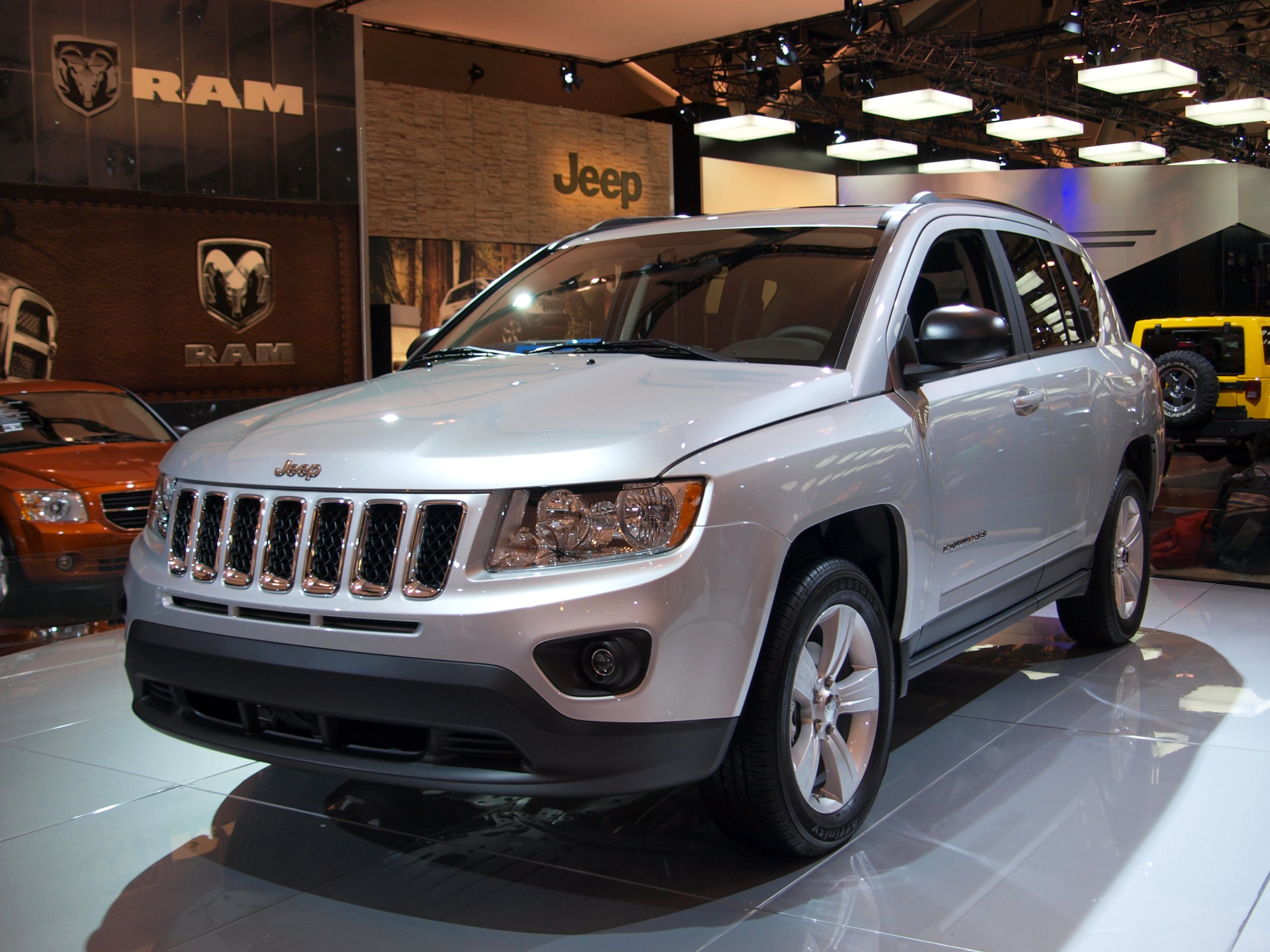
3. **Jeep Compass**The Jeep Compass, a compact SUV, has developed a reputation for being a source of significant vexation for its owners, exhibiting “serious issues over various model years.” For anyone contemplating the purchase of this particular model, the clear advice from numerous disgruntled buyers is to “steer clear of this SUV” if you want to avoid what many describe as “a migraine headache on wheels.”
One of the most persistent and infuriating complaints among owners revolves around the vehicle’s transmission. Both the continuously variable transmission (CVT) and the 9-speed automatic transmissions have been singled out for their abysmal performance. Owners report experiencing “herky-jerky shifting,” which not only makes for an unpleasant driving experience but also signals deeper mechanical distress.
More alarmingly, these transmission issues frequently escalate to “catastrophic failure,” leaving owners with a costly and debilitating repair. The thought of a major component like the transmission failing prematurely is enough to deter any rational buyer, especially when considering the long-term financial commitment of a car loan. Such reliability concerns drastically undermine the vehicle’s utility.
Beyond the pervasive transmission woes, the Jeep Compass is also plagued by other significant mechanical shortcomings. Reports of “poor engine performance” indicate a lack of power and efficiency, making daily driving a chore rather than a pleasure. Adding to the list of frustrations is “excessive oil consumption,” a problem that often signals internal engine issues and requires constant monitoring and topping off.
Furthermore, “electrical system issues” contribute to the overall unreliability of the vehicle, leading to unexpected failures of various components and further draining owners’ patience and wallets. These combined problems paint a picture of a vehicle that consistently fails to deliver on basic reliability, turning the promise of SUV adventure into a prolonged episode of regret and expense.
Read more about: Walk Away Now: 10 SUVs That Are Guaranteed to Bring Buyer’s Remorse
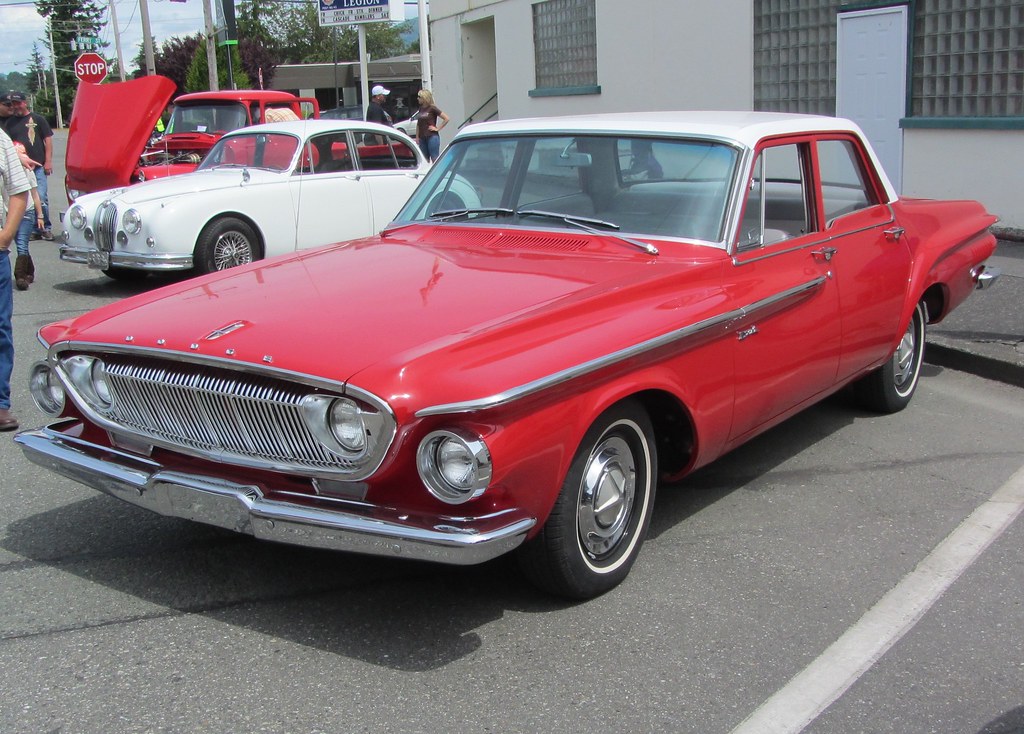
4. **Dodge Dart**Despite its designation as a compact sedan, the Dodge Dart quickly earned a notorious reputation for suffering from “full-size car problems,” indicating a disproportionate number of severe issues for its segment. The sheer breadth of its mechanical failures is daunting, making it a poster child for buyer’s remorse among compact car owners.
Where does one even begin to list the litany of complaints? The problems span virtually every critical system of the vehicle, from “the transmission to the engine and from the suspension to the brakes.” This isn’t a car with an isolated flaw; it’s a vehicle with systemic design and engineering deficiencies that affect its fundamental operation and safety.
These widespread issues translated directly into a profoundly dissatisfying ownership experience for many. Owners frequently faced expensive and recurring repairs across multiple components, transforming what should have been a reliable mode of transport into a constant drain on their finances and patience. The promise of a modern, efficient compact sedan dissolved into a cascade of mechanical failures.
Hard data underscores this pervasive discontent. According to Consumer Reports, a significant “around six in 10 buyers say they are not satisfied with the vehicle.” This statistic is a powerful indictment, highlighting a clear consensus among a majority of owners that their purchase did not meet their expectations, underscoring deep regret.
Ultimately, the Dodge Dart stands as a stark example of a car that many owners wished they had never bought. Its consistent mechanical failings, spanning key components, combined with widespread dissatisfaction, solidify its place on the list of vehicles that frequently lead to immediate regret behind the wheel.
Car Model Information: 2015 Dodge Dart SXT
Name: Dodge Dart
Caption: 1966 Dodge Dart GT 2-door hardtop
Manufacturer: Dodge
Production: 1959–1976 (US market)
ModelYears: 1960–1976 (US market)
Class: Full-size
Layout: FR layout
Predecessor: Dodge Coronet#Fourth generation (1957–1959)
Related: Plymouth Valiant,Chrysler Valiant,Dodge Phoenix
Successor: Dodge Aspen,Dodge Diplomat,Talbot Tagora
Categories: 1970s cars, All articles with unsourced statements, Articles with short description, Articles with unsourced statements from December 2023, Articles with unsourced statements from May 2025
Summary: The Dodge Dart is a line of passenger cars produced by Dodge from the 1959 to 1976 model years in North America, with production extended to later years in various other markets.
The production Dodge Dart was introduced as a lower-priced full-size model in 1960 and 1961, but became a mid-size car for one model year for 1962, and was then reduced to a compact for two generations, from 1963 to 1976.
Chrysler had first used ‘Dart’ name plates on two Italian styled show cars, in 1956 and 1957, before it became a Dodge model name. The Dart nameplate was resurrected for a Fiat-derived compact car that was introduced in 2012.
Get more information about: Dodge Dart
Buying a high-performing used car >>>
Brand: Dodge Model: Dart
Price: $9,995 Mileage: 143,082 mi.
Read more about: Buyer’s Remorse in Every Mile: 11 Cars Drivers Say They’d “Unbuy” If They Could
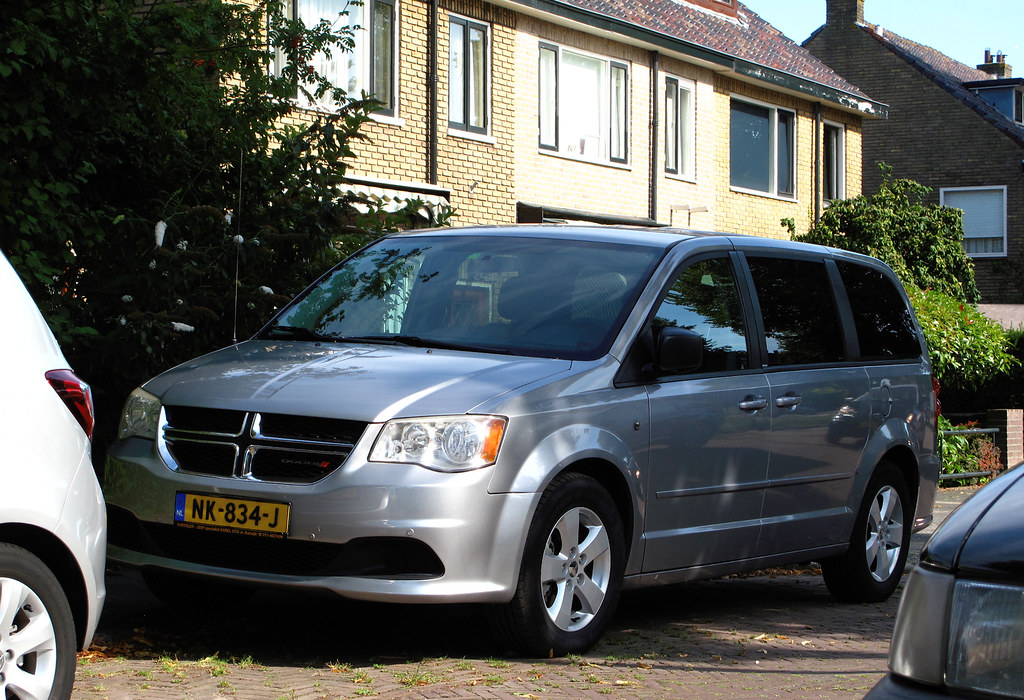
5. **Dodge Grand Caravan**The Dodge Grand Caravan holds a unique place in the hearts of many families, often serving as the backdrop for countless road trips and daily commutes, forging memories – some undoubtedly fond, others perhaps less so. However, beneath this nostalgic veneer, the reality of driving a Grand Caravan often proved to be “anything but smooth driving” for its long-term owners.
At the forefront of owner complaints is the critical issue of transmission failure. This is not merely an occasional hiccup but a “common complaint,” indicating a fundamental flaw in a core component vital for the vehicle’s operation. For a minivan relied upon for transporting families, pets, and cargo, such a prevalent problem is simply unacceptable.
Before the transmissions ultimately “go kaput,” owners frequently report a series of alarming symptoms. These include “delayed gear engagement,” which can make pulling away from a stop or accelerating feel dangerously unpredictable. “Rough shifting” and “slipping” gears are also common precursors, creating a jerky and uncomfortable driving experience that constantly reminds owners of impending mechanical doom.
Adding to the frustrations, many owners also grappled with persistent “electrical system problems,” which can manifest in a variety of unpredictable ways, from minor inconveniences to more serious operational failures. Furthermore, “heavy oil consumption” was another recurring issue, suggesting underlying engine wear or design flaws that required constant attention and added to running costs.
Given this relentless barrage of mechanical and electrical issues, it’s hardly surprising that if owners “could rewind time and have a do-over, they would gladly choose something else.” The Grand Caravan, for all its potential as a family hauler, frequently delivered more headaches than harmony, solidifying its place as a vehicle that led to profound buyer’s remorse.
Car Model Information: 2020 Jeep Wrangler Sport
Caption: 2011 Dodge Grand Caravan Mainstreet
Name: Dodge Grand Caravan
Manufacturer: Chrysler Corporation,Daimler AG,Chrysler LLC,Chrysler Group LLC,FCA US LLC
Class: Minivan
Layout: FF layout,F4 layout
Production: November 2, 1983 –August 21, 2020
ModelYears: 1984–2020
Related: Plymouth Voyager,Chrysler Town & Country (minivan),Dodge Mini Ram,Chrysler Voyager,Volkswagen Routan
Assembly: Windsor, Ontario,Fenton, Missouri,Fenton, Missouri,Fuzhou
Successor: Dodge Journey,Chrysler Voyager
Categories: All-wheel-drive vehicles, All articles with unsourced statements, Articles with short description, Articles with unsourced statements from December 2017, Articles with unsourced statements from May 2009
Summary: The Dodge Caravan is a series of minivans manufactured by Chrysler from the 1984 through 2020 model years. The Dodge version of the Chrysler minivans, was marketed as both a passenger van and a cargo van (the only version of the model line offered in the latter configuration). For 1987, the model line was joined by the long-wheelbase Dodge Grand Caravan. Produced in five generations across 36 model years, the Dodge Caravan is the second longest-lived Dodge nameplate (exceeded only by the Dodge Charger). Initially marketed as the Dodge counterpart of the Plymouth Voyager, the Caravan was later slotted between the Voyager and the Chrysler Town & Country. Following the demise of Plymouth, the model line became the lowest-price Chrysler minivan, ultimately slotted below the Chrysler Pacifica.
Sold primarily in the United States and Canada, the Dodge Caravan was also marketed in Europe and other international markets under the Chrysler brand (as the Chrysler Voyager or Chrysler Caravan). From 2008 onward, Dodge marketed the model line only as the Grand Caravan; Ram Trucks sold a cargo-only version of the model line as the Ram C/V Tradesman. The model line was also rebranded as the Volkswagen Routan from 2009 through 2014.
After the 2020 model year, the Dodge Grand Caravan was discontinued, ending production on August 21, 2020. For 2021 production, the Grand Caravan nameplate was moved to Chrysler, which used it for a Canadian-market version of the Chrysler Pacifica (in the United States, the exact vehicle was marketed as the Chrysler Voyager).
For its entire production run, the Dodge Caravan/Grand Caravan was manufactured by Chrysler Canada (now Stellantis Canada) at its Windsor Assembly facility (Windsor, Ontario). From 1987 until 2007, the model line was also manufactured by Chrysler at its Saint Louis Assembly facility (Fenton, Missouri). Since their introduction in late 1983, over 14.6 million Chrysler minivans have been sold worldwide (including export versions and versions sold through rebranding).
Get more information about: Dodge Caravan
Buying a high-performing used car >>>
Brand: Dodge Model: Grand Caravan
Price: $25,000 Mileage: 54,707 mi.
Read more about: Rust Resistance Rundown: Identifying the Vehicles That Conquer and Crumble in the American Salt Belt
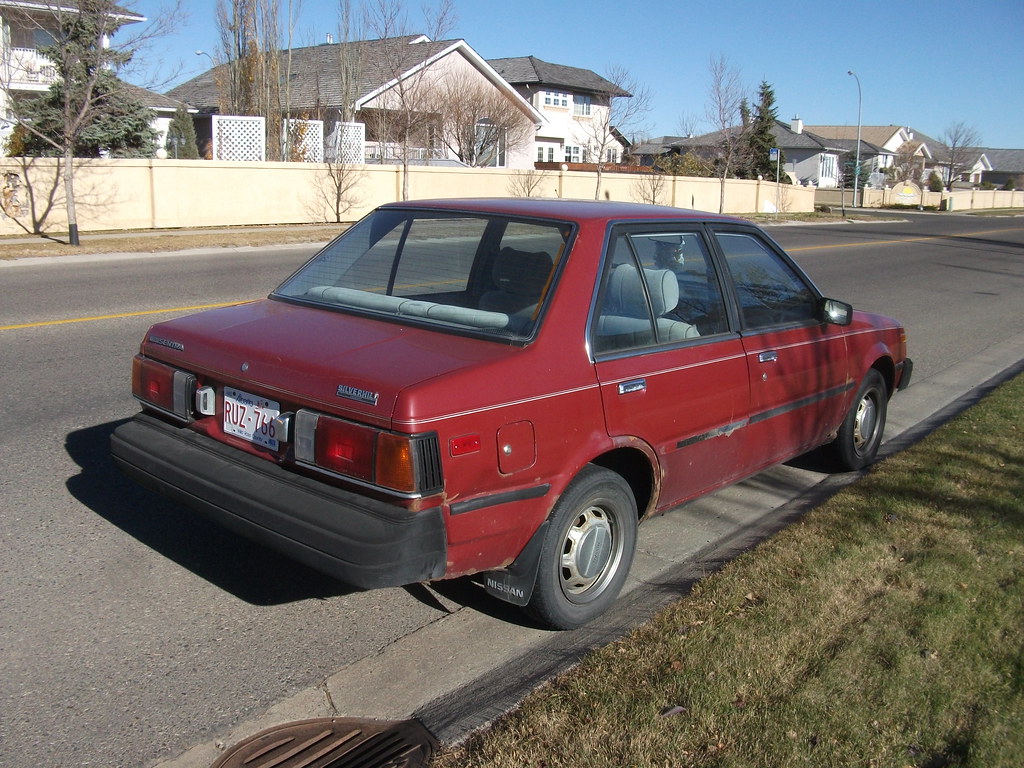
6. **Nissan Sentra**While it’s true that most vehicle lineups feature both triumphs and tribulations across various model years, the Nissan Sentra has several iterations that stand out for all the wrong reasons. While there might be “some good Nissan Sentra model years,” the period from “2013 to 2019” is universally regarded as “horrific” by those unfortunate enough to have owned one.
The primary antagonist in this saga of dissatisfaction is undeniably the “infamous CVT” (Continuously Variable Transmission) that plagued these model years. This transmission proved to be a constant “thorn in the side of many Sentra owners,” leading to a deeply frustrating and unreliable driving experience that severely hampered the vehicle’s performance and longevity.
Owners reported a distressing array of CVT-related problems. These included alarming “overheating,” which could lead to significant damage and even complete transmission failure. The driving experience was further marred by “jerky acceleration” and persistent “shuddering,” which made smooth, consistent power delivery an elusive ideal, diminishing driving pleasure and confidence.
Beyond the transmission’s many shortcomings, the Sentra from this era suffered from additional critical issues. “Engine stalling” was another grave concern, posing both an inconvenience and a potential safety hazard. Such unreliability in the engine further solidified the vehicle’s reputation for mechanical fragility.
Adding to the extensive “laundry list of issues,” these Sentra models were also subject to “many recalls related to the vehicle’s airbags, seatbelts, brakes, and more.” These safety-critical recalls underscore a broader pattern of questionable engineering and manufacturing, making the Nissan Sentra from 2013-2019 a glaring example of a car that simply failed to meet basic expectations for reliability and safety.
Car Model Information: 2024 Nissan Sentra S
Name: Nissan Sentra
Caption: 2021 Nissan Sentra SR (B18; Canada)
Manufacturer: Nissan
Aka: Nissan Sunny
Production: 1982–present
Class: Subcompact car
Predecessor: Nissan Sunny#B310
Categories: 1990s cars, 2000s cars, 2010s cars, 2020s cars, All Wikipedia articles written in American English
Summary: The Nissan Sentra is a series of automobiles manufactured by the Japanese automaker Nissan since 1982. Since 1999, the Sentra has been categorized as a compact car, while previously it occupied the subcompact class. Until 2006, Sentra was a rebadged export version of the Japanese Nissan Sunny, but since the 2013 model year, Sentra is a rebadged export version of the Sylphy. The Sentra nameplate is not used in Japan. Many other countries in Latin America sell their versions of the Sunny as the Sentra. In Mexico, the first three generations of the Sentra were known as the Nissan Tsuru (Japanese for crane), and the B13 model was sold under that name until 2017, alongside the updated models badged as Sentra.
In North America, the Sentra currently serves as Nissan’s compact car, despite being rated as a mid-size car by the EPA due to its interior volume since the 2007 model year. While previous Sentras were subcompacts, the Sentra has grown over the years, with the Nissan Versa having replaced the Sentra in the entry-level area.
The Sentra name was created for Nissan by Ira Bachrach of NameLab, and Bachrach describes the origin as “Nissan wanted consumers to understand that it was quite safe even though it was small. The word Sentra sounds like central as well as sentry, which evokes images of safety.”
Get more information about: Nissan Sentra
Buying a high-performing used car >>>
Brand: Nissan Model: Sentra
Price: $17,487 Mileage: 24,259 mi.
Read more about: Rust Resistance Rundown: Identifying the Vehicles That Conquer and Crumble in the American Salt Belt
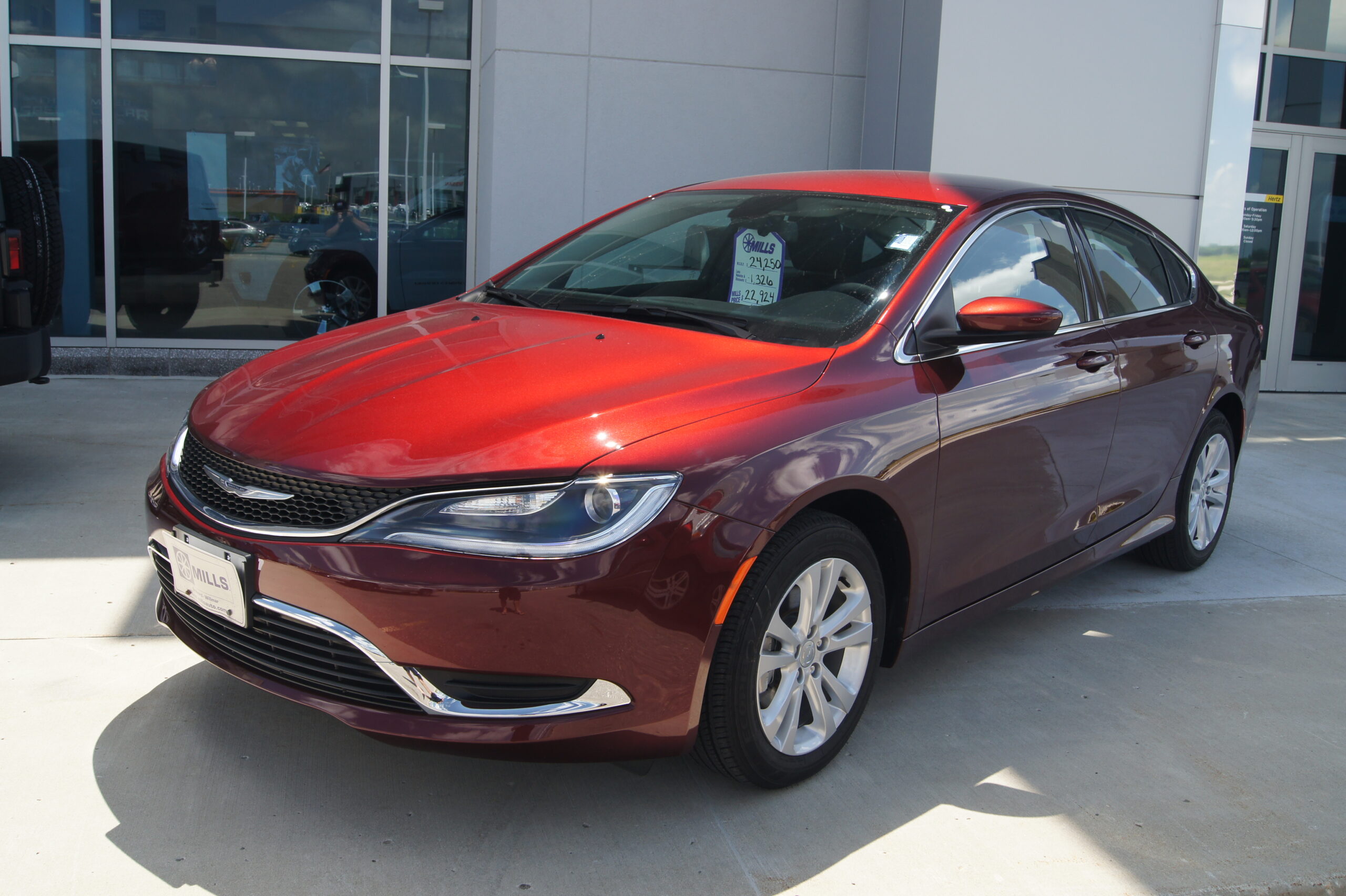
7. **Chrysler 200**The Chrysler 200, a sedan manufactured between 2011 and 2017, quickly garnered a reputation for possessing “many reliability issues” during its relatively short production run. This made it a frequent contender in discussions about vehicles that leave their owners with a lingering sense of regret, especially for those who committed to financing one.
Among the various reliability concerns, the 9-speed automatic transmission in the 2015, 2016, and 2017 models proved to be “especially problematic.” This particular transmission was a significant source of frustration, often exhibiting unpredictable behavior and a general lack of refinement that detracted from the driving experience.
The transmission issues were not merely cosmetic or minor inconveniences; they frequently escalated to severe failures. “Transmission failure was a thing, too,” indicating that owners weren’t just dealing with rough shifts but with outright mechanical breakdowns requiring extensive and costly repairs, often prematurely in the vehicle’s lifespan.
Compounding these transmission woes, the Chrysler 200 also “suffers from engine performance problems.” These could range from a lack of power and responsiveness to more severe issues that impacted the vehicle’s overall driveability and long-term durability, leading to further dissatisfaction and unexpected expenses for owners.
Collectively, the persistent transmission failures and engine performance issues painted a clear picture of a vehicle that struggled with fundamental mechanical soundness. For many who financed a Chrysler 200, the initial allure quickly faded, replaced by the bitter taste of regret as they faced a constant battle against a seemingly endless stream of mechanical problems and the financial burden they entailed.
Picking up where our last analysis left off, the journey through vehicles that frequently spark buyer’s remorse continues. A new car’s allure is powerful, but ownership can quickly devolve into a costly, frustrating experience. Our expert evaluation now shifts to another eight models, each with its notorious catalog of issues. These consistently fall short, proving not every vehicle lives up to its promise, especially when financed under less than ideal terms.
Car Model Information: 2013 Chrysler 200 Touring
Name: Chrysler 200
Manufacturer: Chrysler
Production: 2010–2016
ModelYears: 2011–2017
Assembly: Sterling Heights, Michigan
Class: Mid-size car
Sp: us
Predecessor: Chrysler Sebring
Categories: 2010s cars, All articles with dead external links, All articles with unsourced statements, Articles with dead external links from July 2020, Articles with permanently dead external links
Summary: The Chrysler 200 is a mid-size sedan that was manufactured and marketed by Chrysler from model years 2011 to 2017 across two generations in four-door sedan and two-door convertible (first generation only) body styles.
The 200 nameplate debuted on the 200C, a prototype hybrid vehicle shown at the 2009 North American International Auto Show in Detroit and based on the Chrysler 300. The 200C concept was engineered to accept either traditional gasoline, hybrid or full-electric powertrains.
Get more information about: Chrysler 200
Buying a high-performing used car >>>
Brand: Chrysler Model: 200
Price: $7,788 Mileage: 117,030 mi.
Read more about: The Ultimate Guide to Family-Friendly Cars: Top Picks & Essential Considerations for Kids and Pets in 2025
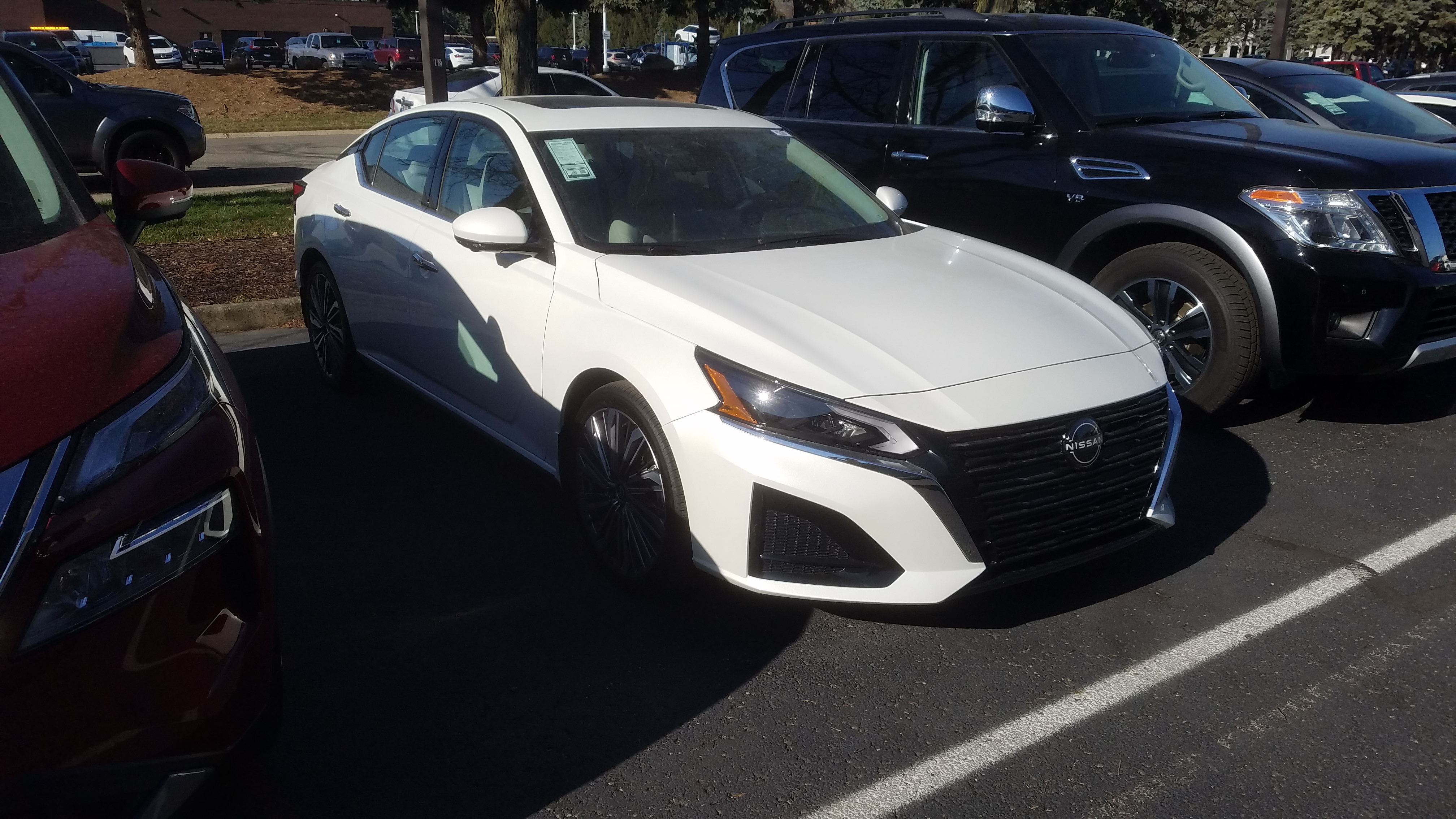
8. **Nissan Altima**The Nissan Altima has long been a contender in the mid-size sedan market, often chosen for value and fuel economy. Yet, for many owners of 2013-2019 models, initial appeal dissolved into profound regret, primarily due to the problematic continuously variable transmission (CVT). This CVT often manifested issues like hesitation, inconsistent power delivery, and even mechanical failure, turning drives into a source of anxiety and unexpected repair costs.
Beyond transmission woes, the Altima drew complaints for its vague steering, lacking feedback. Excessive oil consumption and persistent oil leaks further plagued these models, signaling deeper engine health concerns. These combined flaws severely undermined reliability, making it a frequent source of buyer’s remorse for those who financed one.
Ultimately, the Altima often delivered a taxing ownership experience marked by unforeseen expenses and consistent frustrations. Its widespread reliability issues, particularly with its core powertrain, consistently positioned it as a car many owners wished they had never purchased, fostering long-term regret.
Car Model Information: 2024 Nissan Altima 2.5 SV
Name: Nissan Altima
Caption: 2024 Nissan Altima SR (L34; US)
Manufacturer: Nissan
Aka: Nissan Bluebird
Production: 1992–present
Class: Compact car
Predecessor: Nissan Bluebird,Nissan Stanza
ModelYears: 1993–present
Categories: 2000s cars, 2010s cars, 2020s cars, All-wheel-drive vehicles, All Wikipedia articles written in American English
Summary: The Nissan Altima is a mid-size car manufactured by Nissan since 1992. It is a continuation of the Nissan Bluebird line, which began in 1955.
The Altima has historically been larger, more powerful, and more luxurious than the Nissan Sentra but less so than the Nissan Maxima. The first through fourth-generation cars were manufactured exclusively in the United States and officially sold in North and South America, along with the Middle East and Australia. For other markets, Nissan sold a related mid-size sedan called the Nissan Teana which was between the Altima and Maxima in terms of size. In 2013, the Teana became a rebadged version of the fifth-generation Altima.
The name “Altima” was originally applied to a top trim line of the Nissan Leopard for the Japanese market in 1986, and then to the Nissan Laurel Altima mid-size car sold in Central America and the Caribbean before 1992. In 1992, Nissan discontinued the Stanza which was a Nissan Bluebird clone, replacing it with the US-built Altima, while remaining a compact car. The first Altima was produced in June 1992, as a 1993 model. All Altima models for the North American market were built in Smyrna, Tennessee, until June 2004, when Nissan’s Canton, Mississippi plant also began producing the model to meet high demand.
Get more information about: Nissan Altima
Buying a high-performing used car >>>
Brand: Nissan Model: Altima
Price: $18,991 Mileage: 49,039 mi.
Read more about: Rust Resistance Rundown: Identifying the Vehicles That Conquer and Crumble in the American Salt Belt
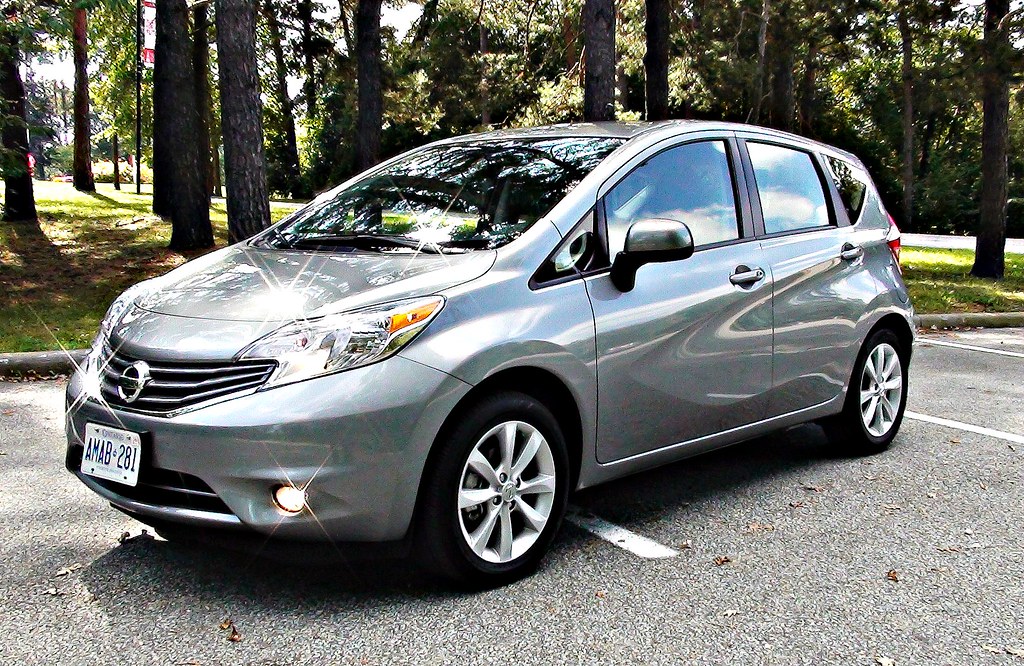
9. **Nissan Versa Note**The Nissan Versa Note, marketed as a “super-cheap small hatchback,” attracted buyers seeking maximum affordability. This low price, however, often proved an accurate reflection of the vehicle’s overall quality. For many budget-conscious owners, initial savings quickly evaporated amidst mechanical frustrations.
At the heart of Versa Note’s owner dissatisfaction was, predictably, its continuously variable transmission (CVT). This unit frustrated owners “to no end” with sluggish responses, lack of refinement, and mechanical issues, making routine drives arduous. Compounding problems was the “anemic acceleration” from its 1.6-liter 4-cylinder engine, leaving drivers wanting more power, particularly on highways.
The combination of a troublesome CVT and an underpowered engine resulted in a vehicle struggling to meet basic driving expectations. This consistent underperformance, coupled with inevitable repair costs, transformed the Versa Note from an economical choice into a regrettable financial commitment, proving a low sticker price can come at a much higher cost.
Car Model Information: 2020 Jeep Wrangler Sport
Name: Nissan Note
Manufacturer: Nissan
Production: 2004–present
Class: Mini MPV
BodyStyle: hatchback
Layout: Front-engine, front-wheel-drive layout,Front-engine, four-wheel-drive layout
Predecessor: Nissan Almera Tino
Aka: Nissan Versa
Caption: Nissan Note (E13)
Categories: 2010s cars, 2020s cars, All-wheel-drive vehicles, All Wikipedia articles written in British English, All articles containing potentially dated statements
Summary: The Nissan Note (Japanese: 日産・ノート, Hepburn: Nissan Nōto) is a supermini/subcompact hatchback or a mini MPV manufactured and marketed globally by Nissan. Introduced in 2004, the first-generation Note was primarily marketed in Japan and Europe, and was produced in Japan and the United Kingdom. The second-generation model was sold in other regions, including North America where it was manufactured in Mexico and marketed as the Versa Note, and Thailand, where it serves as one of the B-segment hatchback offered by the brand alongside the smaller March/Micra under the Eco Car tax scheme.
In 2017, the second-generation Note was replaced by the French-built K14 Micra for the European market. The Versa Note was discontinued in North America in 2019 due to the decreasing demand for subcompact hatchbacks in the region. It continued to be produced and sold in Japan up to the introduction of the third-generation Note in late 2020.
The Note was introduced with a series hybrid drivetrain in late 2016 as the Note e-Power. Due to its popularity and the push of electrification, the third-generation Note is only available with the e-Power drivetrain, with a WLTC fuel economy of 29.5 kilometres per litre (69 mpg‑US).
Get more information about: Nissan Note
Buying a high-performing used car >>>
Brand: Nissan Model: Versa Note
Price: $25,000 Mileage: 54,707 mi.
Read more about: Beyond the Showroom: Unpacking the Fierce Loyalty of Car Enthusiasts to Their Beloved Brands and Models
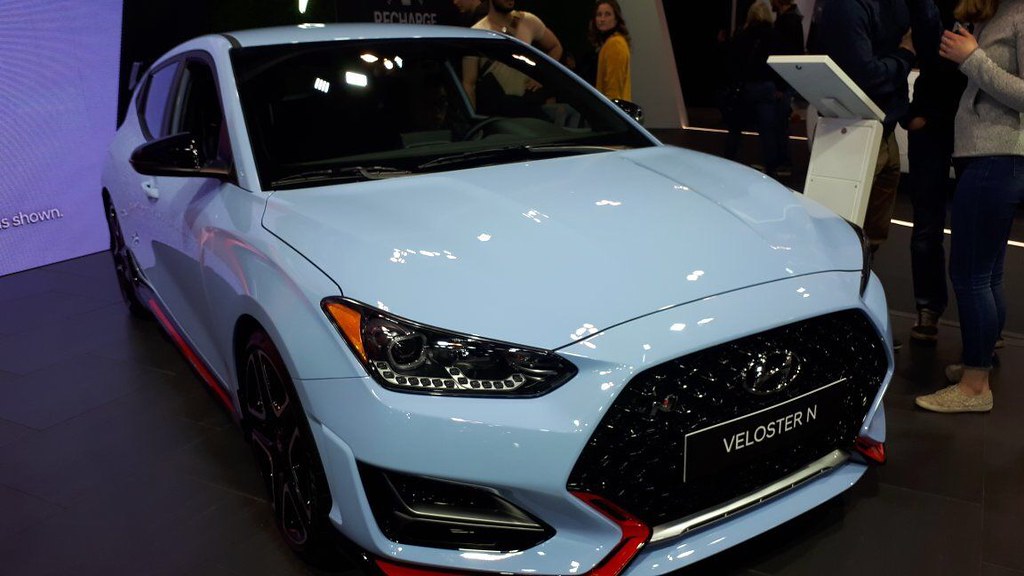
10. **Hyundai Veloster**The Hyundai Veloster carved a niche with its “cool-looking” three-door design, promising responsive handling. This unique aesthetic and performance appeal made it an exciting prospect. However, the Veloster’s charm often couldn’t mask “problems hard to ignore,” quickly leading owners to regret their purchase.
Chief among concerns were significant engine issues, with reports highlighting potential “catastrophic failure”—a devastating prospect. Furthermore, the dual-clutch transmission, intended to enhance its sporty nature, frequently suffered from “delayed acceleration, slipping, and jerky shifts.” These powertrain deficiencies severely undermined driving dynamics, transforming spirited drives into frustrating encounters.
Adding to mechanical headaches, the Veloster also exhibited “suspension and steering problems,” further diminishing perceived quality. For those who bought into the promise of a distinctive, engaging compact, these widespread mechanical shortcomings ultimately overshadowed aesthetic appeal, cementing its reputation as a car whose distinctiveness came with a heavy, regrettable price tag in reliability.
Car Model Information: 2013 Hyundai Veloster Base
Name: Hyundai Veloster
Manufacturer: Hyundai Motor Company
Production: 2011–2022
Class: Sport compact car
Layout: Front-engine, front-wheel-drive layout
BodyStyle: hatchback
Predecessor: Hyundai Tiburon
ModelYears: 2012–2022
Assembly: Ulsan
Categories: All Wikipedia articles in need of updating, All articles with unsourced statements, Articles containing Korean-language text, Articles with short description, Articles with unsourced statements from May 2018
Summary: The Hyundai Veloster (Korean: 현대 벨로스터, romanized: Hyeondae Belloseuteo) is a compact car which was produced by Hyundai from 2011 until 2022. The car differs from most other hatchbacks with its asymmetrical door configuration, featuring one large door on the driver side and two smaller doors on the passenger side. This configuration is more common on commercial vehicles and minivans.
Get more information about: Hyundai Veloster
Buying a high-performing used car >>>
Brand: Hyundai Model: Veloster
Price: $9,489 Mileage: 73,577 mi.
Read more about: Buyer’s Remorse in Every Mile: 11 Cars Drivers Say They’d “Unbuy” If They Could
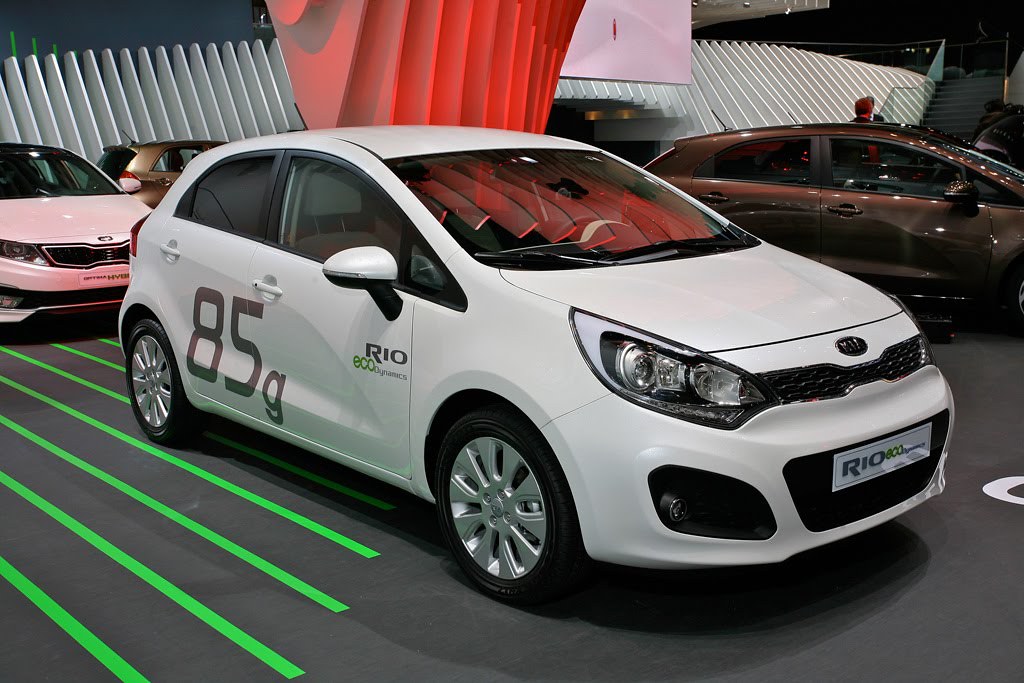
11. **Kia Rio**The Kia Rio has traditionally been positioned as an accessible option, celebrated for its “affordability and efficiency.” Yet, owner feedback reveals many who embraced the Rio later contended with significant “buyer’s remorse,” a testament to problems often offsetting its initial low cost.
The primary source of discontent for Rio owners centered on persistent “engine issues.” These frequently manifested as “rough idling and misfires,” symptoms detracting from driving comfort and pointing to underlying mechanical vulnerabilities. Such problems were often traced to fundamental components like “spark plugs or ignition coils,” requiring recurrent, unexpected maintenance chipping away at affordability.
Beyond critical engine flaws, many owners also voiced dissatisfaction with “cheap interior quality and comfort issues.” This highlighted a broader compromise in vehicle design. The combination of nagging mechanical problems and a less-than-refined cabin made the Kia Rio a vehicle that, despite its attractive price, often delivered more headaches than satisfaction.
Car Model Information: 2019 Kia Rio LX
Name: Kia Rio
Caption: Fourth generation Kia Rio
Manufacturer: Kia
Aka: Kia Pride (2005–2017),Kia K2 (China; 2011–2020)
Production: November 1999 – December 2023
ModelYears: 2001–2023 (North America)
BodyStyle: hatchback
Class: Subcompact car
Layout: Front-engine, front-wheel-drive layout
Predecessor: Kia Pride,Kia Avella
Successor: Kia K3 (BL7),Kia Soluto
Categories: 2000s cars, 2010s cars, Articles containing Korean-language text, Articles with short description, CS1 Croatian-language sources (hr)
Summary: The Kia Rio (Korean: 기아 리오) is a subcompact car manufactured by Kia from 1999 to 2023. Body styles have included a three and five-door hatchback and four-door sedan, equipped with inline-four gasoline and diesel engines, and front-wheel drive.
The Rio replaced the first generation Pride—a rebadged version of the Ford Festiva—and the Avella, a subcompact sold as a Ford in some markets. A second generation was introduced in 2005 in Europe and in 2006 in North America, sharing its platform with the Hyundai Accent, a subcompact manufactured by its sister Hyundai Motor Company in South Korea.
In August 2023, the K3 was introduced as its successor in several markets such as Mexico and the GCC countries.
Get more information about: Kia Rio
Buying a high-performing used car >>>
Brand: Kia Model: Rio
Price: $11,469 Mileage: 49,180 mi.
Read more about: Walk Away Now: 10 SUVs That Are Guaranteed to Bring Buyer’s Remorse
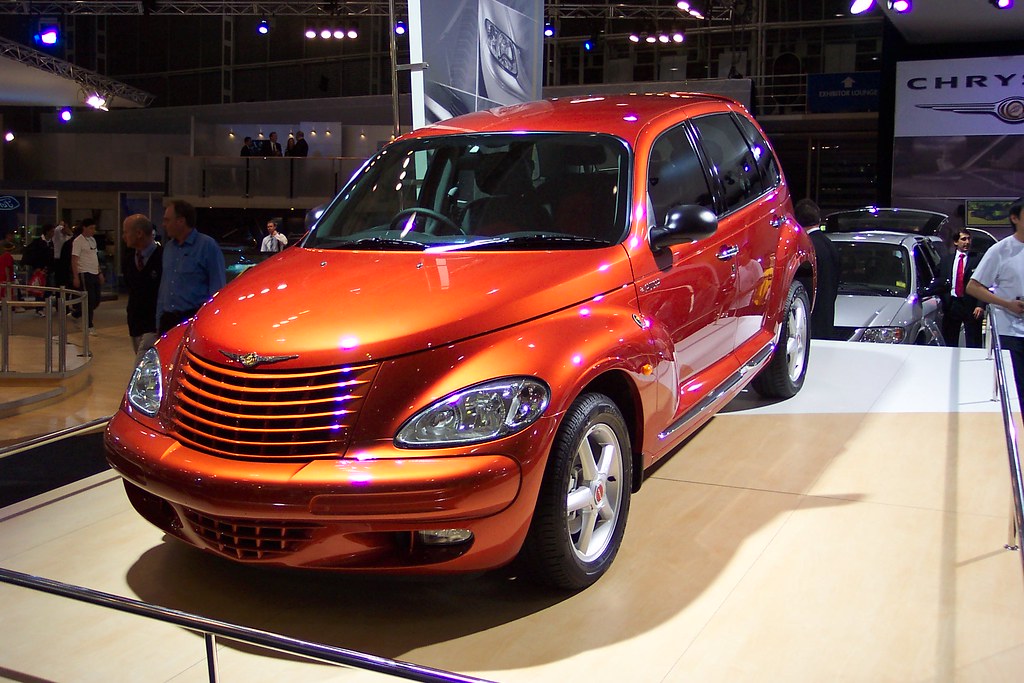
12. **Chrysler PT Cruiser**The Chrysler PT Cruiser holds a unique automotive history due to its polarizing “retro style that people love or hate — or is that love to hate?” While its distinct appearance stood out, for many owners, novelty quickly wore off facing pervasive mechanical issues transforming their purchase into deep regret.
The PT Cruiser was notorious for “engine issues galore,” encompassing a wide range of debilitating problems. Owners frequently reported persistent stalling, rough idling, alarming overheating, and even severe “head gasket failure,” indicating fundamental powertrain flaws. These critical engine failures led to costly, recurring repairs burdening owners financially and undermining reliability.
Compounding engine troubles, the PT Cruiser also suffered widespread “transmission and electrical problems,” further solidifying its mechanically fragile reputation. For those who financed this distinctive compact, the relentless stream of failures overshadowed initial fondness, quickly turning their investment into a regrettable, expensive long-term commitment.
Car Model Information: 2020 Jeep Wrangler Sport
Name: Chrysler PT Cruiser
Manufacturer: Chrysler
ModelCode: PT,PG
Production: 2000–2010
ModelYears: 2001–2010
Assembly: Toluca, Mexico State
Designer: Bryan Nesbitt
Class: Compact car
BodyStyle: convertible
Platform: Chrysler PT platform
Related: Dodge SRT4,Dodge Neon
Predecessor: Dodge Neon
Successor: Lancia Delta#Third generation
Layout: Front-engine, front-wheel-drive layout
Engine: ubl
Transmission: Ultradrive#40TE
Wheelbase: 103 in
Abbr: on
Length: 168.8 in
Width: 67.1 in
Height: 63 in
Weight: 3123 lb
Categories: 2010s cars, All articles with unsourced statements, Articles with short description, Articles with unsourced statements from March 2018, Cars discontinued in 2010
Summary: The Chrysler PT Cruiser is a compact car that was built by the American company Chrysler from 2001 until 2010. Introduced as a five-door hatchback wagon, a two-door convertible variant was also made from 2005 until 2008.
Originally planned as a Plymouth model, the PT Cruiser was ultimately marketed as a Chrysler when Plymouth was discontinued. Intended to invoke 1930s aesthetics, the exterior of the PT Cruiser was designed by Bryan Nesbitt. The model received an intermediate facelift for the 2006 model year. Interior packaging was noted for its high roof, high h-point seating, and flexible cargo and passenger configurations enabled by a multi-level rear cargo shelf and rear seats a user could fold, tumble, or remove.
The PT Cruiser was produced in Mexico and Austria at the Toluca Car Assembly and Eurostar Automobilwerk factories respectively. By the end of production in July 2010, worldwide production had reached 1.35 million.
In its nameplate, PT stands for “Personal Transport” or “Personal Transportation.” PT was the PT Cruiser’s product code for the Mexican-made units.
Get more information about: Chrysler PT Cruiser
Buying a high-performing used car >>>
Brand: Chrysler Model: PT Cruiser
Price: $25,000 Mileage: 54,707 mi.
Read more about: Rust Resistance Rundown: Identifying the Vehicles That Conquer and Crumble in the American Salt Belt
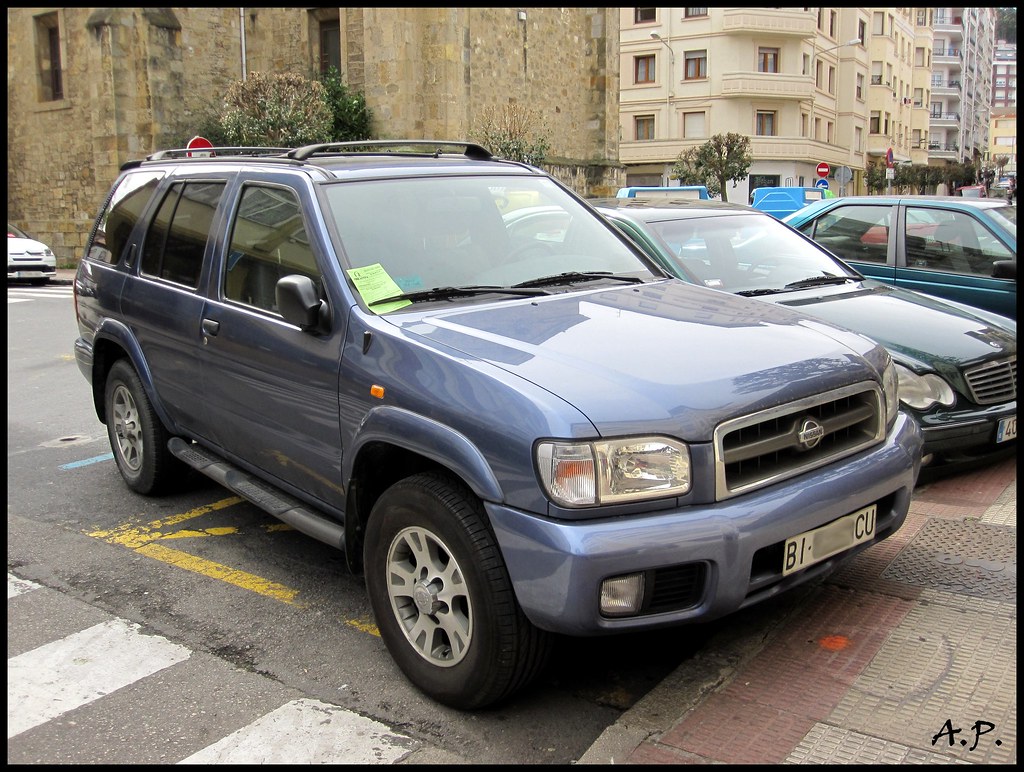
13. **Nissan Pathfinder**The Nissan Pathfinder, often seen as a popular choice for families seeking a dependable SUV, ironically left many owners “regretting their buying decisions.” While its size and family-friendly appeal were attractive, long-term ownership often revealed critical lack of reliability challenging its fundamental utility.
A recurring antagonist in the Pathfinder’s story is the continuously variable transmission (CVT)—a familiar, problematic theme across several Nissan models. This CVT was frequently cited for “rough shifting, shuddering, and even overheating,” severely impacting driveability and long-term health. For many, these issues culminated in the dreaded need for a transmission replacement, an exceptionally expensive repair.
Beyond the transmission’s persistent failures, the Pathfinder also grappled with “engine issues and fuel system problems,” further eroding owner confidence. These combined mechanical shortcomings meant what was intended as a reliable family SUV often became a source of constant worry and unexpected financial drains, making it a deeply regrettable investment.
Car Model Information: 2023 Nissan Pathfinder Platinum
Name: Nissan Pathfinder
Caption: 2023 Nissan Pathfinder Platinum 4WD (R53, US)
Manufacturer: Nissan
Production: 1985–present
Layout: unbulleted list
Chassis: unbulleted list
Predecessor: unbulleted list
Successor: unbulleted list
Categories: 1990s cars, 2000s cars, 2010s cars, 2020s cars, All-wheel-drive vehicles
Summary: The Nissan Pathfinder is a range of sport utility vehicles manufactured by Nissan since 1985. Until the third-generation model, the Pathfinder is based on Nissan’s compact pickup truck platform which it shares with the Navara/Frontier.
The Pathfinder was marketed as the Nissan Terrano (Japanese: 日産・テラノ, Hepburn: Nissan Terano) outside North America. Beginning in 2004, the vehicles were marketed globally as the Pathfinder.
In 2012, the R52 series Pathfinder was released as a three-row crossover SUV based on the unibody Nissan D platform, moving away from the body-on-frame chassis format. The role of a mid-size body-on-frame SUV in Nissan’s global lineup was passed to the Terra/X-Terra, which was released in 2018 and based on the D23 series Navara.
Get more information about: Nissan Pathfinder
Buying a high-performing used car >>>
Brand: Nissan Model: Pathfinder
Price: $36,777 Mileage: 46,270 mi.
Read more about: Family Car Buying Guide: The Safest 3-Row SUVs for 2025 Based on IIHS and NHTSA Data

14. **Nissan Frontier**The Nissan Frontier, a mid-size pickup truck, appeals to buyers seeking utility and capability. However, for owners of 2005-2010 models, the Frontier often became a source of intense frustration, sparking “problems that leave owners shaking their heads and pounding the dashboard with their fists.” This generation was plagued by a notorious design flaw leading to catastrophic consequences.
The most infamous issue centered on a critical defect where the “radiator leaks coolant into the transmissions,” a severe problem that inevitably destroyed the automatic gearbox. This contamination led directly to “slipping gears, herky-jerky shifting, and ultimately transmission failure,” rendering the truck unreliable and expensive to rectify. Such widespread transmission failures were a devastating blow for owners reliant on their truck.
Adding to profound transmission woes, the Nissan Frontier also contended with “engine and timing chain issues,” further cementing its reputation for underlying unreliability and costly repairs. For those who bought into the promise of a dependable mid-size truck, the Frontier from this era frequently delivered a frustrating, financially draining experience, making it a prime candidate for immediate buyer’s remorse.
Car Model Information: 2016 Nissan Frontier SV
Categories: All set index articles, Articles with short description, Nissan vehicles, Set index articles on cars, Short description is different from Wikidata
Summary: The Nissan Frontier is a nameplate used on three different pickup truck models by Nissan:
Nissan Frontier (international), an alternative nameplate for the NP300/Navara on some markets.
Nissan Frontier (North America), a rebadged NP300/Navara from 1997 to 2021, then became a separate model since 2021.
Nissan Frontier Pro, a rebadged Dongfeng Z9 that will be available from 2025. Available as both a diesel and plug-in hybrid, with the latter being the initial variant.
Get more information about: Nissan Frontier
Buying a high-performing used car >>>
Brand: Nissan Model: Frontier
Price: $12,973 Mileage: 115,564 mi.
Read more about: Seeing Clearly: Your Essential Guide to 2025 Cars with Top Nighttime Visibility and Superior Driver Sightlines
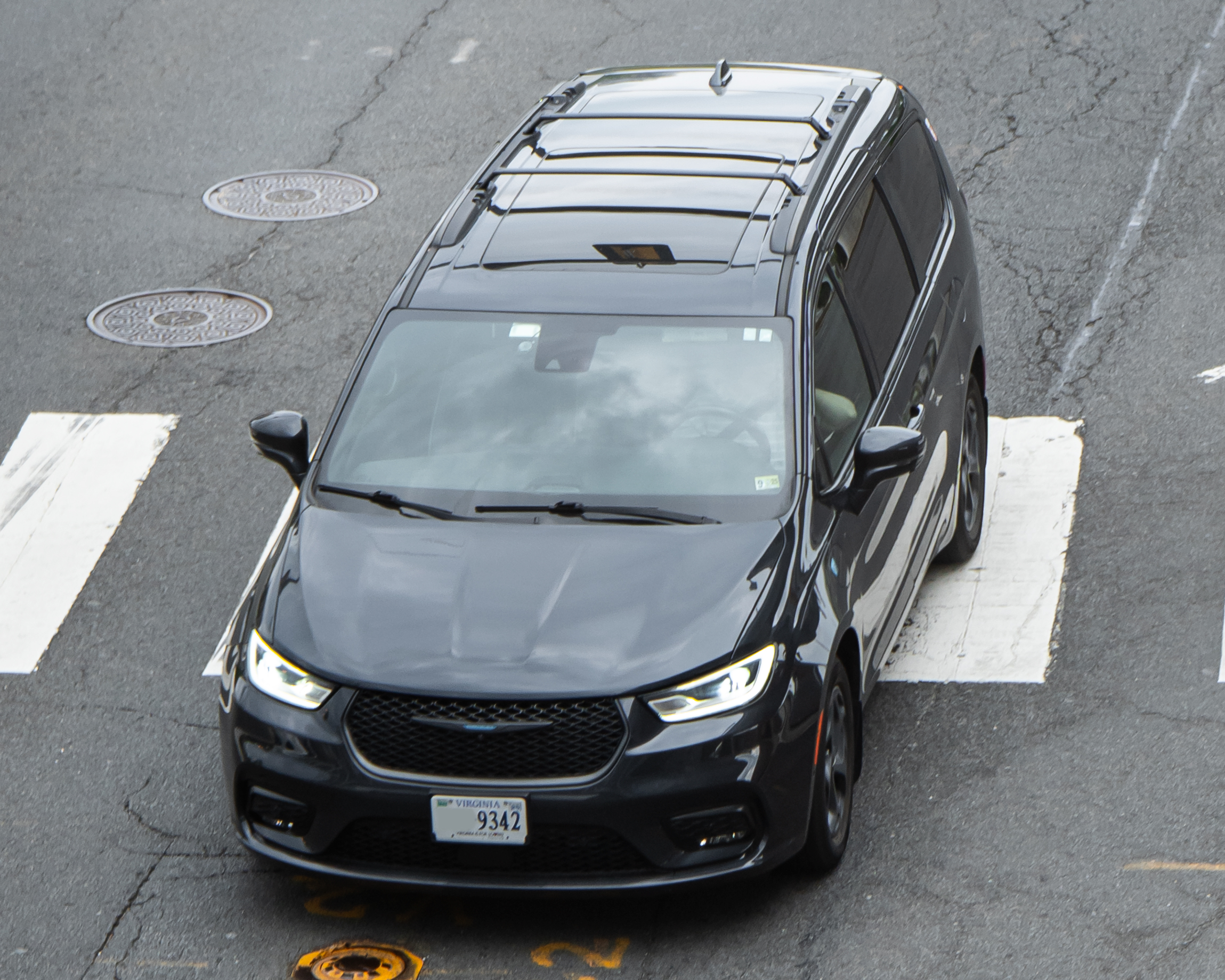
15. **Chrysler Pacifica Hybrid**The Chrysler Pacifica Hybrid, with its innovative “plug-in hybrid powertrain,” aimed to offer the best of both worlds: spacious minivan functionality and impressive “fuel efficiency.” It initially presented itself as an ideal solution for modern families prioritizing utility and eco-consciousness.
Yet, despite promising features, the Pacifica Hybrid quickly accumulated a litany of “battery and electrical problems,” leading many owners to question if fuel efficiency could “offset” these significant issues. Reports included persistent “battery drain,” an “inconsistent all-electric range,” and even outright “battery failure,” critical flaws for a hybrid often resulting in exceptionally high repair costs.
Further contributing to owner dissatisfaction was the “electric continuous variable transmission,” also presenting its own reliability concerns, adding another layer of complexity and potential failure. These extensive, interconnected issues meant the Pacifica Hybrid, for all its advanced technology, frequently delivered more headaches than the peace of mind its eco-friendly credentials promised, often leading to profound regret.
Avoiding a vehicle that becomes a financial albatross is paramount, especially when facing the long-term commitment of a car loan. Our deep dive into these 15 models reveals a consistent pattern: initial appeal often gives way to a harsh reality of mechanical failures, design flaws, and unexpected expenses that drain both wallets and patience. It’s a sobering reminder that a shrewd purchase requires looking beyond the showroom shine and delving into the nitty-gritty of long-term reliability and owner satisfaction.
The data unequivocally shows that the most common car-buying regret isn’t about color or minor features, but about the “make and model” itself. This underscores the critical importance of diligent research and learning from the collective experiences of current owners. While the temptation of a shiny new vehicle, or the pressure to finance, can be immense, the wisest approach is always to prioritize proven dependability over fleeting allure.
Read more about: Walk Away Now: 10 SUVs That Are Guaranteed to Bring Buyer’s Remorse
Ultimately, your choice behind the wheel impacts not just your daily commute, but your financial stability for years to come. By heeding these warnings and understanding a vehicle’s true track record, you can navigate the complex world of car purchases with confidence, ensuring your next automotive adventure is one of satisfaction, not regret. Drive smart, not just shiny.


